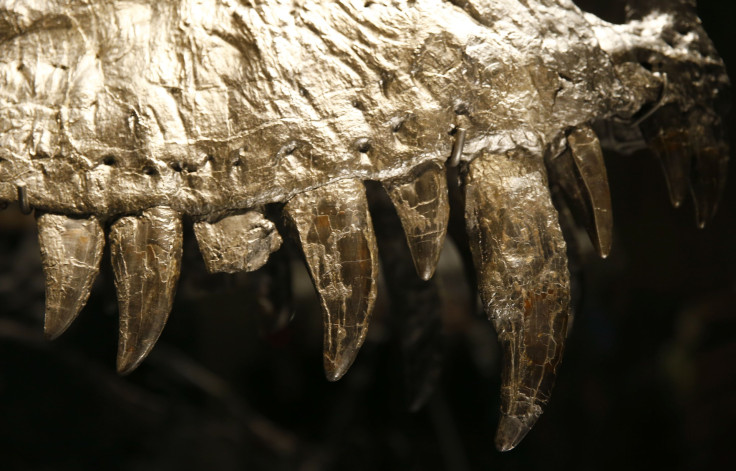'One Who Causes Fear': This Newly Discovered Dinosaur Species Is A T-Rex Lookalike
KEY POINTS
- The T-Rex lookalike dinosaur species grew up to five meters long
- It has a unique skull that's even different from other abelisaurids
- The new species and other abelisaurids were likely among the main predators at the time
Abelisaurids are said to be among the best-known theropods but it looks like we're missing out on one of its important species all this time. A team of researchers is claiming to have found another member of this group of dinosaurs and it's said to look quite like the famous Tyrannosaurus Rex.
T-Rex Lookalike
Named Llukalkan aliocranianus, or "one who causes fear," the species looked rather like the famous T-Rex in general, with its "stubby" arms and the fact that they could also move upright with their hind limbs, Taylor & Francis noted in a news release Tuesday.
The Llukalkan also appears to have been a formidable predator, just like its lookalike. It grew up to five meters long, had sharp teeth and "extremely powerful bite." It possibly even used its massive claws to stab its prey.
The new species' fossil remains were discovered at the Bajo de la Carpa Formation at the La Invernada fossil area in northwestern Patagonia, researchers said in a new study published in the Journal of Vertebrate Paleontology.
The T-Rex Lookalike was found just 700 meters away from the fossil remains of a Viavenator exxoni. But it had certain features that differentiated it from the Viavenator, supporting it as a new taxon, the researchers noted.
The 'one who causes fear'—new meat-eating predator discovered https://t.co/tJ9SQv2pG4
— Phys.org (@physorg_com) March 30, 2021
Unique Skull
Despite the Llukalkan's resemblance to the T-Rex, its skull was quite unique. In fact, the "aliocranianus" part of its name means "different skull" in Latin.
Its skull had bumps on it, which would have made them look quite the modern-day Gila monster. And the researchers do have some ideas as to what the bumps were really for.
"Some say that the shape of the head and jaws could have helped to bite the prey, while the horns could have been used to bump into each other," study lead author, Dr. Federico Gianechini of the National University of San Luis, Argentina, told Gizmodo in an email. "It is possible that there was a sexual differentiation and that only the males had horns and that they fought each other, as many horned mammals do today."
What's more, their skull also had a feature that's different even from other abelisaurids. It had a small "posterior air-filled sinus," which researchers said suggests that the Llukalkan likely heard differently, perhaps even better, than other abelisaurids.
Main Predators Of Their Time
The Llukalkan's characteristics suggest that abelisaurids were among the top predators at the time. And the fact that it was found so close to the Viavenator, another abelisaurid, suggests the clade's prominence.
Among the 20 nominate abelisaurid species, which Taylor & Francis noted to have primarily roamed Patagonia and other regions of the southern subcontinent Gondwana, 10 were unearthed in Patagonia.
"The probable coexistence of two abelisaurid taxa demonstrates that the abelisaurids were one of the most important — and likely the main — predator component of the ecosystems, not only in this area, but also in all of Patagonia, during the Late Cretaceous," the researchers wrote.
"This discovery also suggests that there are likely more abelisaurid out there that we just haven't found yet, so we will be looking for other new species and a better understanding of the relationship among furilesaurs," Dr. Gianechini added in the Taylor & Francis news release.

© Copyright IBTimes 2024. All rights reserved.






















